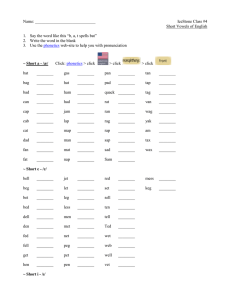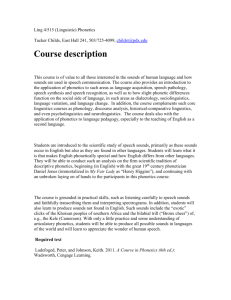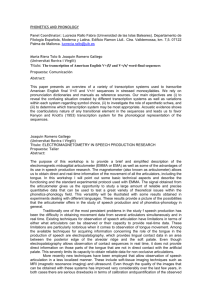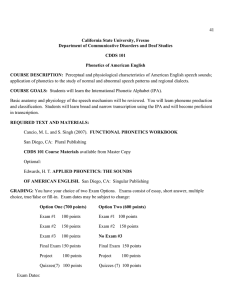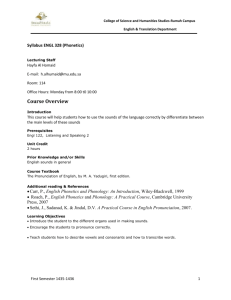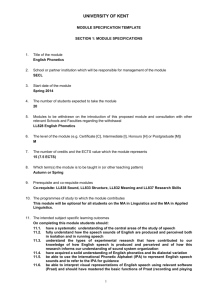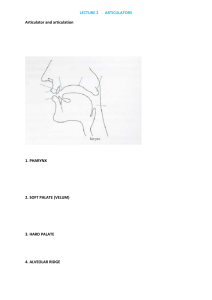LNotes 2
advertisement
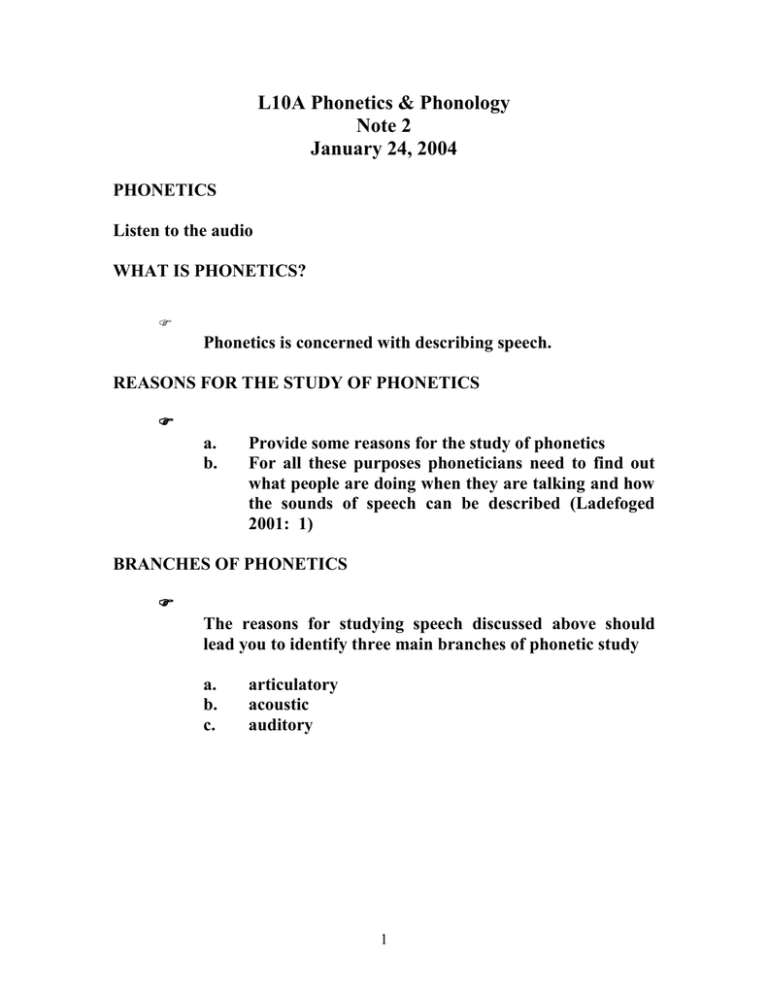
L10A Phonetics & Phonology Note 2 January 24, 2004 PHONETICS Listen to the audio WHAT IS PHONETICS? Phonetics is concerned with describing speech. REASONS FOR THE STUDY OF PHONETICS a. b. Provide some reasons for the study of phonetics For all these purposes phoneticians need to find out what people are doing when they are talking and how the sounds of speech can be described (Ladefoged 2001: 1) BRANCHES OF PHONETICS The reasons for studying speech discussed above should lead you to identify three main branches of phonetic study a. b. c. articulatory acoustic auditory 1 Goals Consider the three main goals below and decide which best meets the study of phonetics. Provide reasons. a. account for any kind of “noise” which the vocal apparatus is capable b. a subset of (a) – those sounds that are linguistically significant in some language or order c. a subset of (b) – only those sounds that are linguistically significant in a particular language. ARTICULATORY PHONETICS The branch of phonetics which we address in this course is articulatory phonetics. Using the diagram of the speech chain to identify and describe the articulatory aspects of phonetics In order to understand the speech production process we need to identify and describe elements of human anatomy and physiology which aid speech The aspects of human anatomy used in speech are called “vocal organs” Although they are used in speech production, they perform other primary biological functions 2 Anatomy of Speech For purposes of identification and description of speech sounds, we will divide the speech production system into three areas: a. Lungs – diagram of b. Larynx – diagrams of c. vocal tract - diagram We need to do and understand the following: a. b. c. Identify the organs, or articulators The way in which the articulators interact The manner in which the articulators interact 3 Nature of the articulators The articulators are classified into two major categories: a. Active articulators b. Passive articulators a. b. With the aid of the diagrams identify and describe each of the articulators Practice: produce sounds and identify the articulator(s) involved Airstream Mechanisms - diagram For sounds to be produced, a current of air has to be set in motion. Speech sounds are produced with airstream originating from three areas of the biological apparatus Practice: a. Pulmonic airstream - diagram b. Glottalic airstream - diagram c. Velaric airstream - diagram Use the IPA to identify and describe English sounds and sounds from other languages Attempt exercises 2.1, 2.2, 2.3 & 2.4: These will be discussed in the seminars 4
